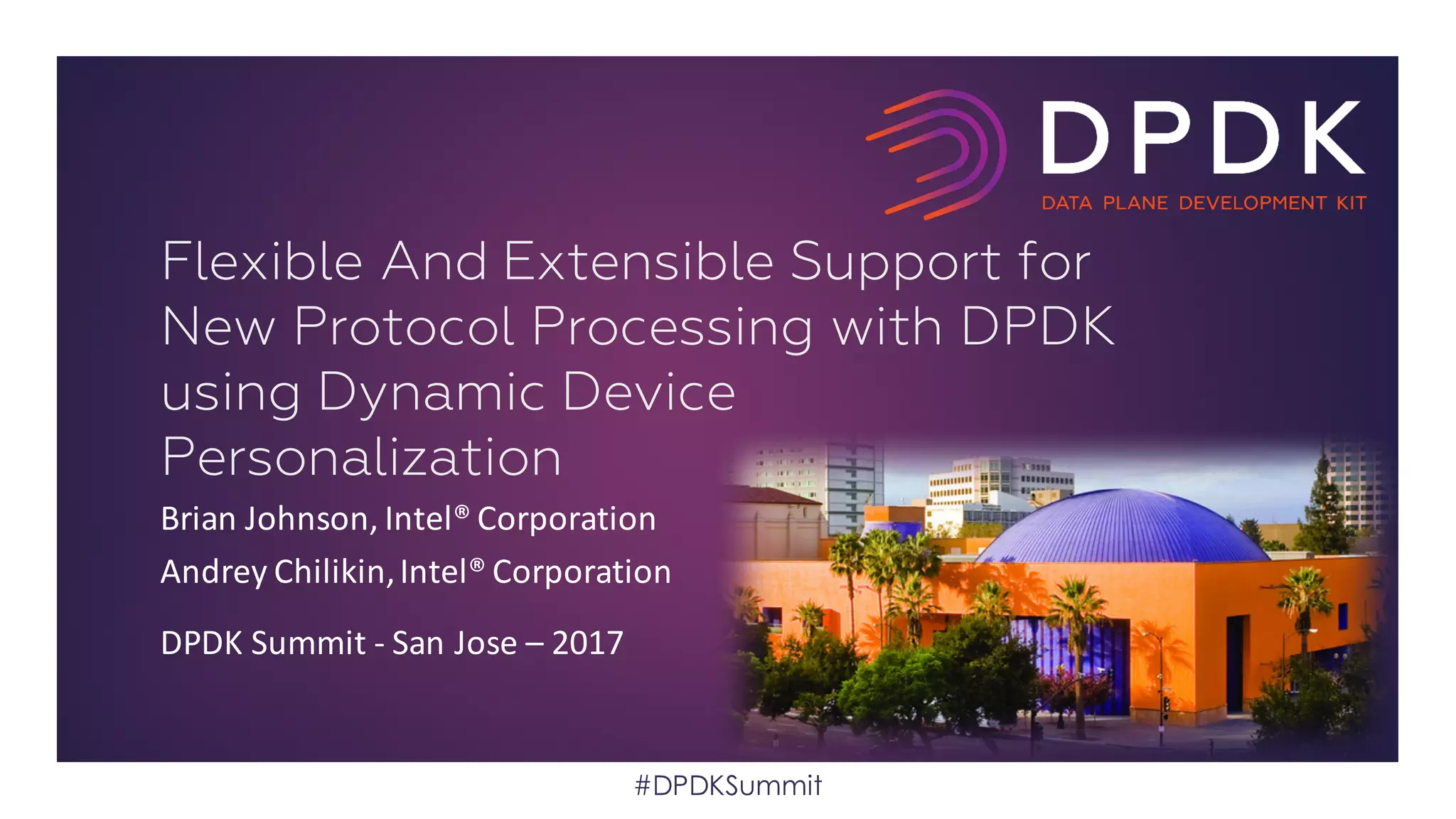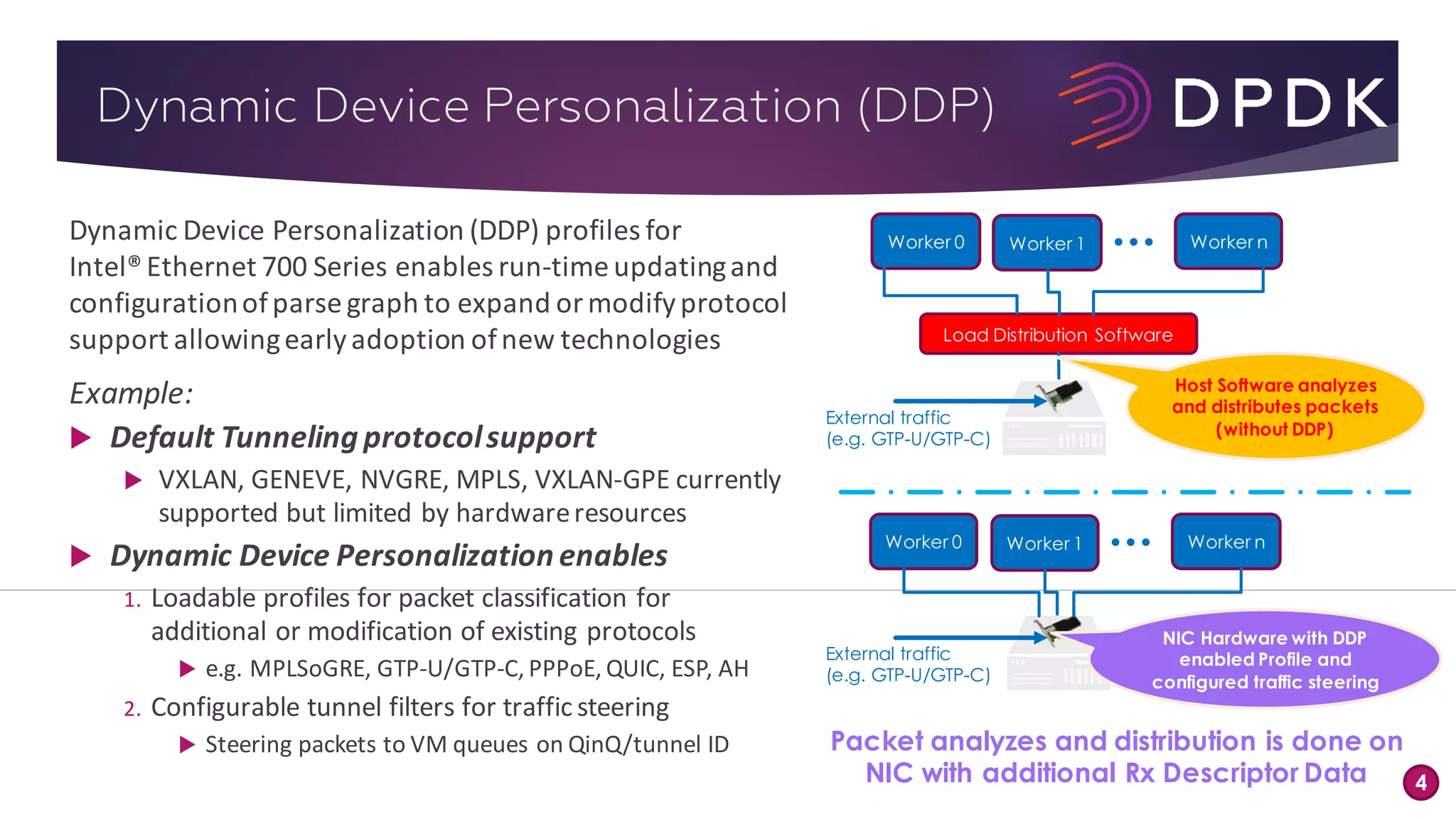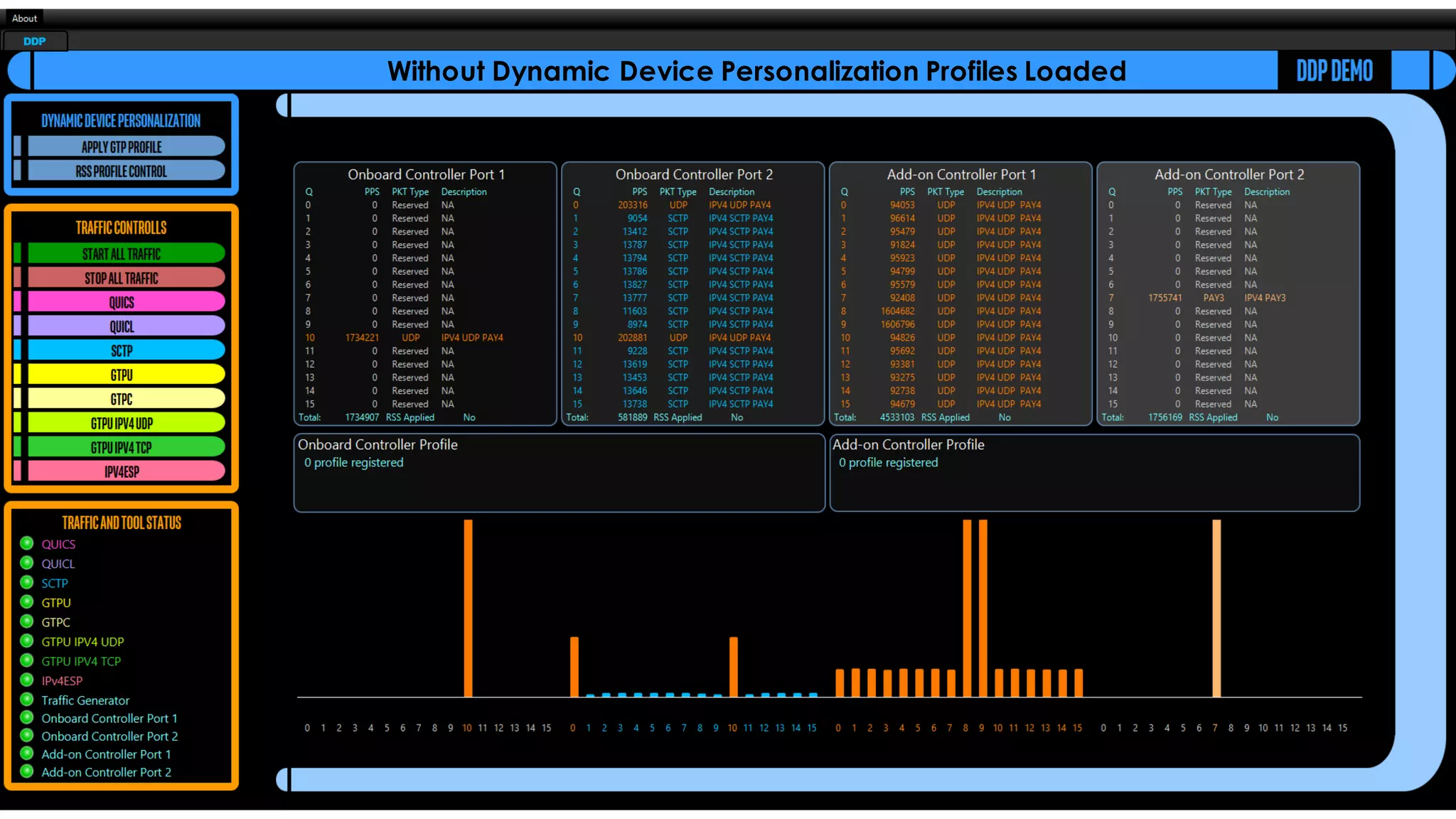This document discusses dynamic device personalization (DDP) using Intel Ethernet 700 Series network cards. DDP allows run-time updating and configuration of the parse graph to expand or modify protocol support. This enables identification and processing of new protocols like MPLSoGRE, GTP-U/GTP-C, and QUIC without requiring a reboot. DPDK APIs allow downloading DDP profiles to enable parsing of additional protocols and configuring traffic steering based on tunnel IDs. With DDP, encapsulated frame fields can be extracted and used for functions like RSS, whereas without DDP those protocols would not be recognized.










